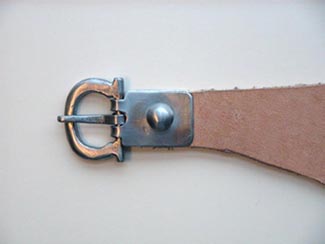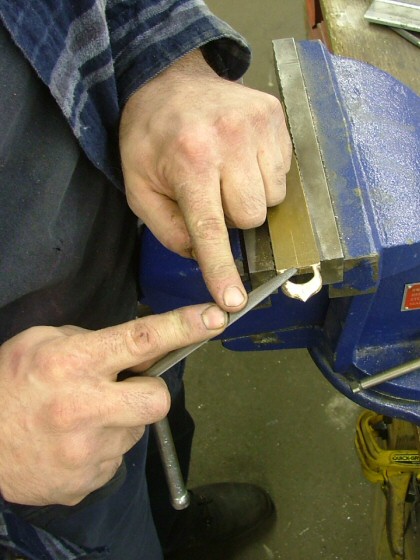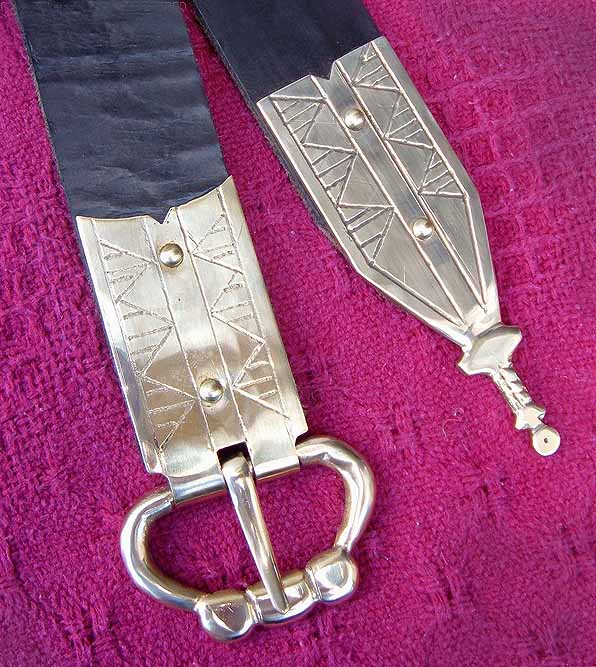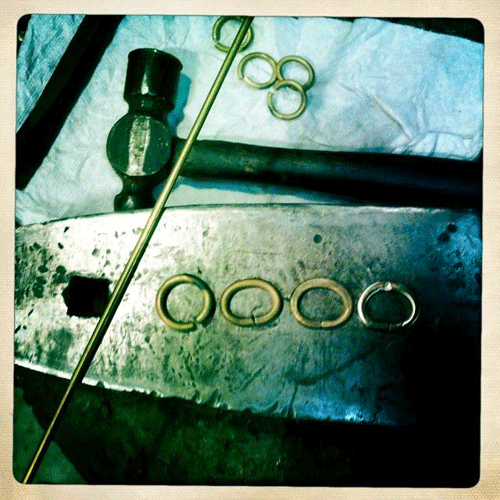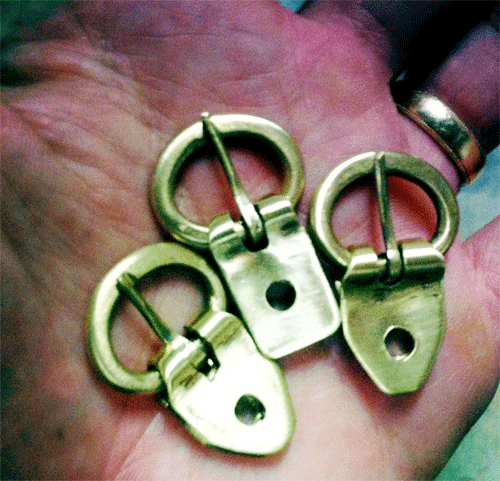Lessons learned:
• Creating the buckle is the easy part. You just drill, cut and file away everything that doesn't look like the buckle you want.
• Creating the plate is the hard part. You can't make it slightly large (or the cutouts slightly small) and gradually refine it by repeated fittings to the buckle. Every time you bend the plate, the bend will get weaker until it finally fails. I knew that before starting the project, thus the foam template--that can be bent and refined any number of times, then used to get the steel plate right on the first try. Theoretically. In practice, the foam is too flexible to get a highly accurate tracing onto to the steel. The small error introduced is enough to make the central slot and side cutouts either too long or too short, and the only way to discover that is after the plate is bent around the buckle. And most of the finishing of the plate--beveling the edges, sanding, etc.--has to take place before the bend. Yes, I had to discard two completely finished buckle plates before I got one that would work. :cry: Fortunately, these are made very quickly.
• IIRC, I used 22 ga. steel for the buckle plate. That's a bit too thin. I thought it would be plenty strong enough to secure the buckle, and I still think that's true. The problem is with securing the plate to the strap. The plate that inspired this one had two small rivet holes at its free end. I decided to use a large single rivet in the center of the plate. The problem with the thin plate is that it can drift slightly during drilling, causing misalignment of the front and back (and thus the rivet holes). To keep the front and back aligned, the rivet then has to be on a slight angle, but the thin stock tends to warp on one side during the peening of the rivet if the shaft of the rivet is on an angle. You can see the slight warping in the surface around the rivet. The good news is that the thin plate also allows a certain amount of correction of this problem--you can simply press the plate back into shape with a piece of wood. A thicker plate will also allow a deeper countersink in the back of the plate. You don't need much, but a deeper countersink will create a stronger hold after the peened end of the rivet is filed or ground flush.
• A nail works fine as the tongue. Just flatten one end and carefully bend it in a vise until the buckle will just fit into the loop, then close the loop with light taps of a hammer.
